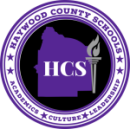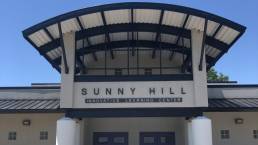Academic Focus – SHIS
When it comes to educating students, there are many variables that can affect learning. Everything from social situations at school to family dynamics at home can impact a student’s ability to learn and retain information. Add the challenges of burgeoning adolescence to the mix of those variables, and learning can be downright daunting for students. Providing a stable and consistent environment can go a long way, however, in making the learning experience something that is fun but also effective. At Sunny Hill Intermediate School, those learning challenges presented themselves last year, but this year SHIS made a plan to stabilize their learning environment.
Using a positive behavior model known as RTI Squared B, SHIS is placing an emphasis on communicating consistent expectations and rewarding positive behavior. Instructional Facilitator Sharon Clark understands how important both of these things are when it comes to making a school environment as conducive to learning as it can be.
“We have some really high expectations set at SHIS this year, and we’re all excited to see our students meet and exceed those expectations,” she explained. “We are implementing a new positive behavior plan. This year has started off quite differently than last year did, so we’re already seeing some positive effects of this program taking place. We’re using the acronym PAWS – P is for Pride, A is for Attitude, W is for Wise Choices, and S is for Safety. That’s taught throughout the entire building. Students and teachers know expectations no matter where students are in the building. We’re teaching and reteaching expectations.”
When students are in the classroom, they know what it means to have pride in the word they’re doing. When students are in the hallway, they know what the expectation is for their attitude as they move about the building. In the cafeteria, students understand what wise choices look like as they eat lunch with their friends. During recess, they practice what being safe is as they enjoy a break from the classroom.
An essential part of RTI Squared B, however, is not simply providing consistent expectations for students but also rewarding those students for following the procedures that are in place. At SHIS, positive behavior is consistently reinforced by providing tickets to students that they can spend at the PAWS store.
“We also have a ticket reward system for students who are doing the right thing and doing what they’re supposed to be doing. They can spend these tickets in the PAWS store. I believe in restorative discipline rather than punitive discipline,” Sharon said.
With the behavioral expectations across the school set, the leadership team at SHIS also looked at the best ways to continue to build on their Level 4 (out of 5) ranking in literacy and numeracy last school year. Sharon credits that ranking to the outstanding teachers in the building.
“Last year, we had a lot of buy-in from our teachers. We had teachers who had high expectations as well as high quality instructional materials. We had a leadership team who helped support teachers with real-time coaching,” she said.
Behavioral expectations for students aren’t the only expectations that are set at SHIS. The faculty and staff hold themselves to a high standard and also have set expectations when it comes to delivering instruction to their students. They also have high expectations for students when it comes to learning, too. Sharon also explains that the leadership team at SHIS also have high expectations for the learning process, and that teaching doesn’t exactly look like it did a generation ago.
“When we grew up, our teachers were the ones in front of the classroom and delivering instruction. Now, we want teachers to guide students as the students learn and facilitate the learning that is taking place,” she said. “First of all, we want to make sure the teachers are teaching the state standards that are set. We’re also looking for student engagement. There used to be this idea that the classroom teacher should be ‘the sage on the stage’, but now we want our teachers to be more of a ‘guide on the side”’. In other words, the students should be doing the heavy lifting of learning in a classroom; the students should be the ones putting forth the most effort in a classroom. That’s where the learning really takes place.”
Something else that’s changed in the world of education is the idea of students talking during class. In the past, conversation between students was something that was more than likely frowned upon during class. Today, however, verbal communication between students is not only encouraged, but backed by research that shows growth in student learning.
“We want to see students collaborating and communicating. Students talking to each other is an excellent way for them to learn,” Sharon explained. “Anything students can do for themselves, the students should be doing.”
Like every school in Haywood County Schools, the SHIS leadership team meets with teachers during their Professional Learning Community (PLC) time. This meeting time is protected and highly valued at every school across the district. The work done in PLC’s directly impacts the learning that takes place in the classroom.
“In our PLC’s, we make sure we’re teaching the state standard with fidelity. We want to make sure our assessment measures what we’ve taught,” Sharon remarked. “We’re looking at data in PLC’s and making sure that students’ academic needs are being met through the curriculum. We’re not just teaching a unit and then moving on; we’re making sure students are learning what they need to learn even if we have to spend some extra time teaching it.”
Another academic priority for SHIS is to make sure teachers are consistently challenging their students with work that is at their grade level.
“We attended a training this summer and one of the main priorities was making sure students are given reading material that’s on their grade level even if that student isn’t reading on grade level,” Sharon explained. “The teacher’s job, then, is to support, support, and support that student as they wrestle with that text and eventually the student will reach grade level. To give anything below grade level to that student would be doing that student a disservice.”
With multiple systems in place – both behavioral and academic – Sunny Hill is definitely positioned to offer its students tremendous learning opportunities and build upon the success they achieved last year.
“We’re shooting for Level 5 this year,” Sharon said with confidence.


